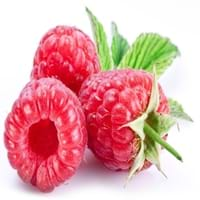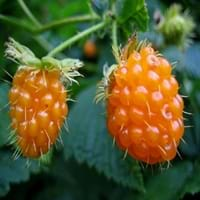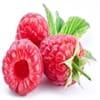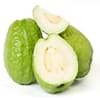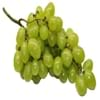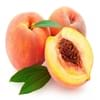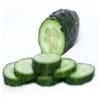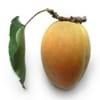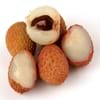Wuku
Kesehatan keuntungan
Nyegah kanker, care Heart, Ngalangi kamudhunan macular, Nyuda masalah getih circulation
Nyegah kanker, Mbenakake kesehatan weteng, situs bobot mundhut
Wuku Umum
anti-natoni, Kontrol tingkat gula getih, sepindah pencernaan, care mripat, Mbantu ing bobot mundhut
anti antioksidan, sepindah pencernaan, care mripat, Marasake awakmu, saka wounds, Mbenakake sesanti mripat, Njogo tingkat kolesterol sehat, strengthens balung
Wuku kulit
keuntungan Anti-tuwa, Brightens lan madhangi corek
keuntungan Anti-tuwa, nyuda kisut
Wuku Rambut
Tumindak minangka moisturizer, Ngatur rambute wutah, mengilap rambute
nglindhungi rambute, Ngatur rambute wutah
alergi
Gejala alergi
AMBEGAN kangelan, eczema, hives, gatel, rame Nasal, irung runny, wahing, mata mbanyu, wheezing
loro weteng, gatel, Dadi gedhe saka tutuk, basa utawa lambé
sisih efek
reaksi alergi
reaksi alergi
Recommeded kanggo
Women ngandhut
Ya
Ya
Women lactating
Ya
Ya
Wektu paling apik kanggo mangan
Best yen dijupuk minangka sarapan (utawa weteng P), Minangka cemilan ing afternoon pungkasan, Aja mangan sawise meal, wektu esuk (sadurunge nedha awan)
Best yen dijupuk minangka sarapan (utawa weteng P), Minangka cemilan ing afternoon pungkasan, Aja mangan sawise meal, wektu esuk (sadurunge nedha awan)
Nutrition
Bantu Size
100 g
100 g
karbohidrat
11.94 g
99+
10.10 g
99+
serat
6.50 g
6
1.90 g
27
Sugar
4.42 g
99+
3.70 g
99+
protein
1.20 g
19
0.90 g
30
Protein kanggo milai rasio
0.10
15
0.09
16
vitamins
Vitamin A (retinol)
2.00 MCG
33
50.00 MCG
12
Vitamin B1 (thiamin)
0.03 mg
30
0.04 mg
23
Vitamin B2 (riboflavin)
0.04 mg
24
0.06 mg
15
Vitamin B3 (niacin)
0.60 mg
26
0.47 mg
32
Vitamin B5 (pantothenic asam)
0.33 mg
11
0.17 mg
37
Vitamin B6 (Pyridoxin)
0.06 mg
32
0.08 mg
21
Vitamin B9 (folic asam)
21.00 MCG
13
17.00 MCG
18
Vitamin C (Ascorbic asam)
26.20 mg
35
9.20 mg
99+
Vitamin E (Tocopherole)
0.87 mg
12
1.61 mg
4
Vitamin K (Phyllochinone)
7.80 MCG
10
14.80 MCG
6
Lycopene
0.00 MCG
9
0.00 MCG
9
lutein + zeaxanthin
136.00 MCG
7
ora Sumadhiya
kolin
12.30 mg
3
ora Sumadhiya
lemak
0.65 g
12
0.33 g
25
Minerals
kalium
151.00 mg
99+
110.00 mg
99+
Iron
0.69 mg
18
0.40 mg
29
sodium
1.00 mg
20
14.00 mg
8
calcium
25.00 mg
18
13.00 mg
28
Magnesium
22.00 mg
11
15.00 mg
19
seng
0.42 mg
6
0.28 mg
10
fosfor
29.00 mg
18
27.00 mg
19
Manganese
0.67 mg
5
1.10 mg
3
tembaga
0.09 mg
24
0.03 mg
99+
selenium
0.20 MCG
15
ora Sumadhiya
Asam lemak
3s Omega
126.00 mg
5
0.00 mg
38
6s Omega
249.00 mg
7
0.00 mg
99+
Sterol
Kadar banyu
85.75 g
35
88.21 g
18
Ash
0.46 g
29
0.56 g
21
Kalori
Bantu Size
100 g
100 g
Kalori ing woh Fresh karo Peel
53.00 kcal
21
47.00 kcal
26
Kalori ing Fresh woh tanpa Peel
ora Sumadhiya
ora Sumadhiya
Kalori ing Frozen Formulir
52.00 kcal
13
ora Sumadhiya
Kalori ing Formulir Dried
363.00 kcal
9
ora Sumadhiya
Kalori ing Formulir Canned
91.00 kcal
8
ora Sumadhiya
Kalori ing Foods
Kalori ing Juice
68.00 kcal
18
55.00 kcal
25
Kalori ing Jam
150.00 kcal
33
120.00 kcal
36
Kalori ing Pie
169.00 kcal
99+
360.00 kcal
9
Ciri
Koleksi
Semono uga Sindhunata
Semono uga Sindhunata
Usum
Summer
Kabeh mangsa
varieties
Amity, August Red, Boyne, Canby, Caroline, Comet, Dinkum, Dorman Red, Latham, Meeker, Black Hawk, Hayda, Lauren, Meeker lan Latham
Golden Ruby lan Olympic Double
seedless Macem-macem
Ora
Ora
warna
Black, Purple, Red, kuning
Pink, abang Pink, Salmon, Salmon kuning
nang werna
Pink
Pink
wangun
conical
oval
Tekstur
jus
jus
rasa
manis
manis
asal
Eropah, Asia North
Amerika Utara
mundak akeh ing
wit
wit
budidoyo
Koleksi lemah
Sandy loam
loam
PH lemah
5.8-6.5
5.7-7.2
Kahanan iklim
Cold
lembab
Facts
facts about
Character length exceed error
Character length exceed error
Ing Minuman Beralkohol
Wine
Ya
ora Sumadhiya
Beer
Ya
ora Sumadhiya
roh
Ya
ora Sumadhiya
koktail
Ya
ora Sumadhiya
Produksi
Top Producer
Rusia
Amerika Serikat saka Amerika
Negara sing
Azerbaijan, Canada, Mexico, Poland, Serbia, Spanyol, Ukraina, Inggris, Amerika Serikat saka Amerika
Canada, Mexico
Top Importir
Amerika Serikat saka Amerika
ora Sumadhiya
Top Used
Poland
ora Sumadhiya
Jeneng èlmiah
Jeneng botani
Rubus Idaeus
Rubus spectabilis
sinonim
Klasifikasi
domain
Eukarya
Eukarya
Inggris
Plantae
Plantae
Subkingdom
Tracheobionta
Tracheobionta
Division
Magnoliophyta
Magnoliophyta
kelas
Magnoliopsida
Magnoliopsida
subkelas
Rosidae
Rosidae
supaya
Rosales
Rosales
Family
Rosaceae
Rosaceae
genus
Rubus
Rubus
spesies
R. idaeus
R. spectabilis
Generic Group
Rose
ora Sumadhiya
